Topic: Finance
SEC’s SPAC Rules to Limit Rosy Projections That Fueled Mania
Entrepreneur turned $700 million Morgan Stanley advisor warns against postponing joy
Research in Action: The SEC looks to Haas research on SPAC rule change to protect investors
Special Purpose Acquisition Companies, known as SPACs, were a hot new investing trend over the past couple of years.
In this short video, accounting professor Omri Even-Tov explains how Special Purpose Acquisition Companies (SPACs) work, how his concerns that they harming individual investors drove his research, and how that research influenced the U.S. Securities and Exchange Commission to tighten up rules.
Even-Tov’s recent paper, “Are SPAC Revenue Forecasts Informative?“, is co-authored with Michael Dambra of the University at Buffalo School of Management and Berkeley Haas PhD Kimberlyn Munever (George) and forthcoming in the The Accounting Review. (See full video transcript below.)
Transcript
Hi everyone, my name is Omri Even-Tov and I’m an accounting professor at the Haas School of Business. You might have heard about SPACs, which was a pretty hot trend until recently. So my colleagues and I actually wrote a paper about SPACs because we had a feeling that they might harm investors.
But before we begin I want to describe to you a bit what a SPAC is and how it works. Let me go to my slides here for some help.
So SPACs are, first, Special Purpose Acquisition Companies. Those are blank-check companies that raise money via an IPO for the sole purpose of acquiring a private company. This transaction is also known as a de-SPAC. Now those SPACs are usually managed by a sponsor. The sponsor can be a private equity firm, a venture capital firm, a hedge fund, or in some cases it can also be an individual—like in the case of Chamath from Social Capital that you all know from the “All-In” a podcast.
So let’s assume in our case there’s a SPAC and this SPAC is called “Just another SPAC.” So this SPAC goes public via an IPO and they raise money. In our case they raise $500 million. Now the SPAC has between 18 to 24 months to try and identify a suitable target to acquire. So let’s assume that they managed to find this target. This target is called, “Some Private Company.” Now once they found the target, the shareholders of the SPAC need to vote on this transaction. If they vote yes, then we have an acquisition and this process is called a de-SPAC transaction and then good luck to all of us.
In the case that the shareholders vote no, or in the case that the SPAC wasn’t able to identify a suitable target, then there is no transaction and all of the money that was initially raised by the SPAC is returned to investors.
Now why is why are SPACs so interesting? They’re very interesting because in the last few years they actually outpaced the number of traditional IPOs. So if we look at this figure you can see that this line counts the number of SPAC IPOs and this line is actually higher than the line of the traditional IPOs—and not just in terms of numbers but also in terms of volume and proceeds raised using the SPAC process. We can see that those bars that reflect SPAC IPO proceeds are actually higher than those of the traditional IPO proceeds.
So why are SPACs so unique that we decided to explore them and examine what’s happening with them? So a main difference between traditional IPOs and SPACs is that traditional IPOs do not have any protection from liability if they provide future-looking statements. So if they provide projections that are misleading or inaccurate, they’re going to be liable for them. In the case of SPACs, those are basically mergers as you saw in the in the in the slide, so they are entitled to a protection under the Safe Harbor rule that came out in 1995. And because of that many SPAC sponsor thought, ‘we basically have a shield from liability if we provide future projections of the companies.
So in our case, what we felt is that because of this theoretical shield, sponsors are going to take advantage of that and they’re going to issue very optimistic projections in order to entice retail investors and investors in general to invest in those companies. And this is exactly what our research finds. We find that SPAC companies, on average, provide very optimistic projections, and in most cases, they underperform. And unfortunately those projections lead to the attraction of a lot of retail investors—not so much institutional investors that are likely are able to steer away from those very optimistic projections. And because retail investors are attracted to those companies, they invest and in the long term they suffer from under performance. We also find that those companies are actually more likely to be sued in a class action lawsuit because this shield doesn’t shield you from everything. If you provide misleading information that is inaccurate then you’re going to be liable for that.
And so our paper was actually very instrumental in a new rule that the SEC issued just a few days ago about amendments being made to the rule about SPACs. And the SEC sites both a common letter that we wrote and our paper by stating that some of the amendments are directly related to that. The first change is to level the playing field between SPAC IPOs and traditional IPOs, and remove this protection from SPAC IPOs from providing future projections. The second thing is basically adding much more disclosure to the projections. How are they being made, who’s making those assumptions, what assumption are being made.
And this is in the hope of helping investors have better information about the companies they invest in. So hopefully this really helps protect retail investors. We believe it does. Thank you for listening.
How our friends’ spending habits mislead us to undersave for retirement
It’s easier to see what our friends, family, and neighbors buy than what they save. Research co-authored by Berkeley Haas finance professor Johan Walden shows how this “visibility bias” can lead us to undersave for retirement.

Americans are not saving enough for retirement, and new research co-authored by Berkeley Haas Professor Johan Walden shows one reason why: They’re misled by conspicuous consumption in their social networks.
“Our neighbors don’t put out a sign showing how much they’ve set aside for retirement, but it’s easy to see the new car sitting in their driveway,” Walden says. “The fact is, observations of someone consuming are more salient than observations of someone saving, and so we observe more of those signals, and we give them more weight in our own decision-making.”
In an article published in The Journal of Finance and coauthored with Bing Han from the University of Toronto and David Hirshleifer from the University of Southern California, Walden shows how the consumption we see among our friends and family pushes us to consume more—and fall short on retirement goals.
Modeling the effect of visibility bias
A recent estimate in the U.S. suggests that the gap between what consumers are saving and what they’ll need to retire is almost $3.7 trillion. For some, this is not a choice: They don’t have the income they need to set money aside. But that’s not the whole explanation.
Walden and his co-authors show that the psychological phenomenon they call “visibility bias” contributes to this chronic undersaving. People don’t tend to publicly share their savings habits, so consumers’ social networks provide inaccurate signals about peers’ consumption and savings. People tend to think their peers are spending more than they are. This, in essence, makes people believe that it’s safe to consume more.
Unlike the phenomenon of competitive consumption—often known as “keeping up with the Joneses”—visibility bias is driven less by comparing oneself to others by incomplete information about others’ spending habits.
In modeling this dynamic, the researchers find that one important implication is the way this effect feeds back on itself. As people see their neighbors and friends buy more, they may raise their rate of consumption; in turn, their neighbors see this increase and bump up their own levels of consumption, continuously squeezing savings out of the picture.
The researchers also show how denser and more extensive networks are likely to intensify visibility bias. Given this, residents of cities are more likely to undersave for retirement. Our growing connectedness through social media, as well as the window it gives into other people’s purchases, is likely to exacerbate the problem as well. (Walden and his coauthors don’t run any experiments of their own, but they propose several empirical approaches to probing the nature and magnitude of visibility bias.)
Finally, the demographic contours of a person’s social network could naturally reduce the strength of this bias. People who are more financially sophisticated tend to consume less, as do people who are older. If someone’s social network contains more of these types of people, “then we find a dampening effect, as you’re receiving signals of low consumption from these groups,” says Walden, the Mitsubishi Bank Chair in International Business and Finance. “But this doesn’t completely offset overconsumption among younger generations.”
More disclosure could increase savings
The effects of undersaving ripple across society, pushing people to work into older age than they otherwise would. People take on more debt, which, in turn, drives up interest rates. Fortunately, to the degree social networks and visibility bias influence the amount we consume, policy interventions may be relatively straightforward.
The researchers suggest two approaches focused on disclosure. First, policymakers could better publicize information on the risk of economic shocks—the frequency of layoffs, for instance, or the costs attached to illness and hospitalization. However, Walden notes that people generally have a difficult time interpreting and internalizing probability, so this may not be the most effective approach.
More productive could be efforts to reveal information about savings and consumption within social networks. On the one hand, policymakers or marketers could build campaigns designed to publicize how and how much people save, thereby making the unseen seen and reducing the influence of visibility bias. Campaigns could also clarify how much people actually consume. One study from 2020 shows that giving people who consume more than they can afford information about average consumption figures reduced their spending by 3%.
But given people’s propensity to believe that others consume more than they do, it’s important to provide appropriate information, Walden says. Simply publishing aggregate saving and consumption data may not be very helpful, since these are already affected by visibility bias. Policymakers should take social networks and demographics into account—for example, by emphasizing consumption habits of older adults. “The more specific, the better,” Walden says.
2023 FTMBA grads land record number of VC jobs
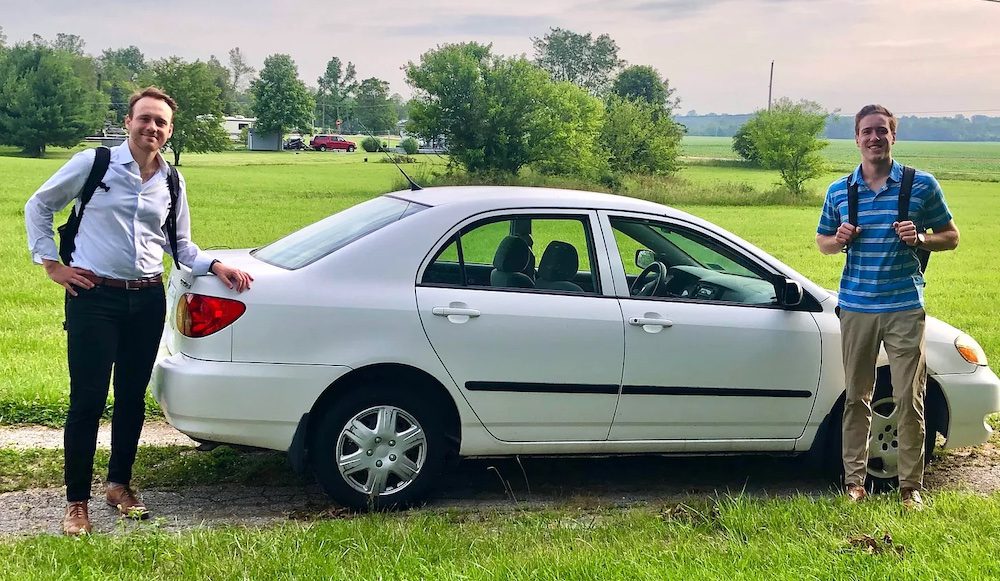
Before Will McKelvey arrived to enroll in the full-time MBA program at Berkeley Haas in 2021, he and his college roommate drove cross-country to California. Along the way, McKelvey, who was planning a career in venture capital, met with as many startups as possible—a whopping 43 founders in five days. McKelvey, an Ohio native, even launched a blog sharing his impressions of venture opportunities from Dayton to Detroit to Chicago.
“You can’t dabble in VC,” McKelvey, MBA 23, who became interested in the economic power of startups while working for Democratic Congressman Ro Khanna for four years, said. “If you decide it’s your thing, go all in. It’s not a space for tourists.”
At Haas, McKelvey didn’t let up, interning at multiple venture firms and serving as co-president of the Haas VC Club. Now an investor at early-stage VC fund Lerer Hippeau, McKelvey is among a record number of 2023 Berkeley Haas MBA graduates working in the field of venture capital.

“VC is the second-biggest sector for finance jobs among our MBAs,” said William Rindfuss, a member of the Haas Professional Faculty who leads strategic programs for the finance faculty group and manages financial services recruiting at Haas. “Only investment banking drew more recent grads.”
Fourteen of the 2023 FTMBA graduates accepted employment in venture capital, a record high. Of that group, half work for venture funds, and half have joined venture arms of tech, health care, and financial services companies, Rindfuss said.
Rindfuss attributes the growth to the support of the Berkeley Haas alumni network, comprehensive courses in venture capital, including New Venture Finance, an increase in campus resources for VC, and the school’s Bay Area location.
Proximity to venture firms gives students the ability to explore VC through both in-semester internships and summer internships over the course of the two-year MBA program. Such a portfolio of experiences can lead to full-time offers. But as Rindfuss notes, landing a job in venture capital differs widely from investment banking.
Proximity to venture firms gives students the ability to explore VC through both in-semester internships and summer internships over the course of the two-year MBA program.
That’s where the students’ hard work comes in with landing internships and jobs. While big banks recruit on campus through a structured process, VC firms expect students to get their attention and come to them, which might mean writing whitepapers on emerging subsectors or reaching out to firms with project ideas in order to build their networks.
Just as the Haas Finance Club has long been a major source of support for Haas students pursuing investment banking, the VC Club has grown into a similar resource, Rindfuss said. The club leads an annual VC Speaker Series course, drawing senior partners and associates from Bay Area VC funds, who offer both big picture and tactical advice.
A pivot from tech to VC
For Aparna Chaganty, MBA 23, breaking into venture capital meant landing an internship with Bessemer Venture Partners. An engineer from India with a master’s in information systems (MIS) degree from Carnegie Mellon, Chaganty was a data scientist and product manager at Salesforce when she started exploring a career pivot.
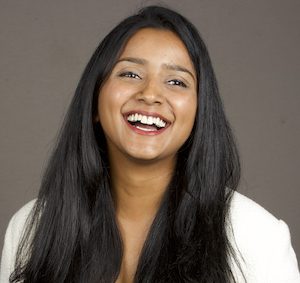
“I really enjoyed building new technology, but I also wanted to know what other paths there were out there,” she said.
Venture capital piqued her interest as a perfect way to combine her tech background with entrepreneurship. “I have always found the growth story of startups extremely inspiring,” she said. “In VC, you can be really close to bringing about change and creating new value in the economy.”
Chaganty ended up accepting a full-time role as an investor at Bessemer Venture Partners in India, an opportunity to return to her home country. Though it hadn’t been her plan at the start, she said she was thrilled by the opportunity to join after Bessemer raised its first India fund. “There is so much entrepreneurship coming out of India,” she said. “Being part of that zero-to-one story is a once-in-a-generation opportunity and being a VC at Bessemer gives me a front-row seat to witness and contribute to that change.”
Crafting your own opportunities
Alex Rohrbach, MBA 23, came to Haas after several years working as a consultant at McKinsey and at an on-demand staffing startup.
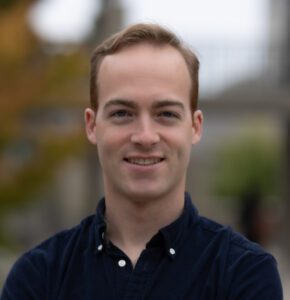
He discovered that both experiences were applicable in VC. “Very quickly, I could add value to busy VCs who needed extra help,” he said. By doing projects with multiple VC firms during the school year in his free time, Rohrbach got exposure to various funds and VCs, helping him learn how they think and structure deals.
“Many MBAs don’t realize that they have a lot of skills they can apply on day one with a VC firm,” Rohrbach said. “Aspiring VCs can develop a thesis about an industry, source companies on campus, and help organize events. If you figure out what you’re good at, you can craft your own opportunities.”
Rohrbach graduated with a job at Thomvest Ventures, a 25-year-old San Francisco fund. He spent his summer internship with Thomvest but says it was never a direct path to full-time employment.
“Each fellowship and internship was a stepping stone, but I didn’t know exactly where I would end up,” he said. In his first year at Haas, he got a fellowship at Pear VC, an early-stage venture firm. He also received a Haas Entrepreneurial Finance Fellowship, providing a $5,000 cash award and mentorship with a Haas alum. “Even more valuable than the money was the access to a mentor – in my case, Andrew Krowne at Dolby Family Ventures,” Rohrbach said.
Rohrbach also consulted during his first year with Union Labs, a VC firm that past Haasies worked for.
“I started to build a portfolio of work so that by the time I was interviewing for summer internships, I had a lot I could talk about,” he said.
Rindfuss and others at Haas hope the number of students pursuing venture capital will only continue to grow as Haasies find homes at more VC firms and bring their experience and advice to future students.
“As more of our graduates succeed in venture capital, we are developing a stronger pool of alumni that will support our students,” Rindfuss said. “It’s an exciting time.”
How AI can give banks an edge in bond trading
Making space and making a difference as an entrepreneur through acquisition
8 of the biggest stock market crashes in history — and how they changed our financial lives
Opinion: Talks can’t end the Ukraine war, because Russia lies
From PhD to MFE: Jingtian Wei’s Inspiring Journey to Quantitative Research
In new model for university start-ups, shared carry funds offer big returns for UC Berkeley
CEOs favor stock analysts with the same first name, study shows. Here’s why.
Why high inflation will never go away (from your head)
The top 50 women leaders of Portland for 2023
Alaska-Hawaiian merger faces a justice department wary of airline combos
Sam Bankman-Fried and Elizabeth Holmes may just be the tip of the corporate fraud iceberg that costs the economy $830 billion annually, study says
Priya Saiprasad, BS 10
Co-Founder and General Partner, Touring Capital
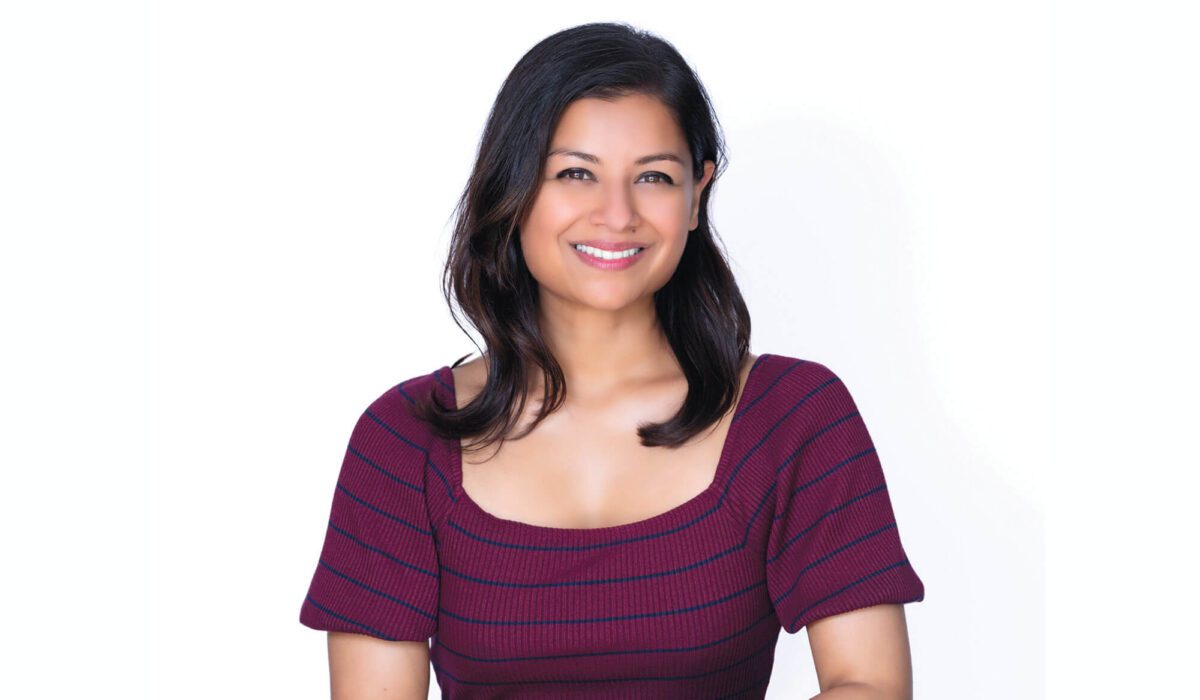 Priya Saiprasad often doesn’t look like other venture capitalists in Silicon Valley boardrooms. But she does look like the consumers of many products under consideration for funding—a perspective that adds value to the discussions happening.
Priya Saiprasad often doesn’t look like other venture capitalists in Silicon Valley boardrooms. But she does look like the consumers of many products under consideration for funding—a perspective that adds value to the discussions happening.
“I bring to the table diverse perspectives that represent Millennials, women, entreprenuership, and a global-mindset that others might not have thought of,” says Saiprasad, who lived in 12 countries as a child.
As co-founder and general partner of Touring Capital, a new venture firm focused on AI software, Saiprasad aims to break the mold of venture funds. “I have many thoughts on how to solve for the systemic biases that exist in venture, how to create a firm that’s founder-first, and how to leverage advancements in AI for the next generation of software productivity.”
A veteran in AI software investment, Saiprasad was primed for her new role. Her experiences at Microsoft’s venture fund M12, Mayfield Fund, and SoftBank Investment Advisers provided insights on creating a cutting-edge yet enduring fund, she says. So when longtime mentor Nagraj Kashyap, an M12 alumnus, approached her about founding a firm with an AI focus, she jumped at the chance.
“Advancements in AI have been happening over the last decade and now they’re finally at a precipice of reaching massive scale and adoption,” she says.
As digital natives, Millennials like Saiprasad are leading the expectations for what AI and other emerging technologies should do. So while she might not look like many in the boardroom today, she certainly looks like the future.
Trading Up
Absent fees, retail traders do better
 The advent of no-fee trading on platforms such as Robinhood has helped fuel an explosion in retail investing—and raised concerns that novices would be tempted to trade too often and lose more money.
The advent of no-fee trading on platforms such as Robinhood has helped fuel an explosion in retail investing—and raised concerns that novices would be tempted to trade too often and lose more money.
But new research co-authored by Assistant Professor Omri Even-Tov shows this fear may be exaggerated: While average investors trade more when fees are removed, they also earn more.
“We show that portfolios don’t underperform just because of greater activity,” Even-Tov says. “In fact, net performance improves by about 11% annually, and this improvement is driven by savings from the removal of fees rather than changes in the returns of trades.”
In a new working paper, co-authored by doctoral student Kimberlyn Munevar, PhD 24, and professors from the University of Pennsylvania and MIT, the researchers analyzed a natural experiment by international trading platform eToro, which dropped fees on certain trades in different countries at different times over the past several years.
The staggered removal of trading fees allowed the researchers to compare investors’ behavior before and after fees were gone. Even-Tov and his co-authors looked at these patterns for over 40,000 investors between 2018 and 2019. They found that the removal of fees increased trading frequency by an average of about 30%. Having no fees also drew people to the eToro platform: New users grew by 172% in countries without fees and only 18% in countries where fees remained in place. The removal of fees also led people to hold significantly more diverse portfolios.
Though this study investigated non-U.S. markets, the researchers ran an analysis to demonstrate that the kind of retail trading conducted by their subjects corresponds with trading on American platforms.
These results come at a time when the U.S. Securities and Exchange Commission is considering whether to regulate one of the main ways that retail brokerage firms make revenue outside of commission, a process called payment for order flow. “Now regulators are looking at whether or not these new methods need to be reined in,” says Even-Tov. But regulatory bodies should be wary of pushing online trading platforms back toward a commission model when putting new policies in place, he says.
Berkeley Haas launches O’Donnell Center for Behavioral Economics to lead the next generation of research
Established with a philanthropic investment of almost $17 million from Robert G. and Sue Douthit O’Donnell, the new center will bring together the best minds from a wide range of fields.

Berkeley, Calif.—Ever since Nobel laureates George Akerlof and Daniel Kahneman created a 1987 UC Berkeley course that broke the rigid barrier between psychology and economics, the university has led the way in bringing the once-disparate disciplines together into the field of behavioral economics.
More than 35 years later, the Haas School of Business is launching the Robert G. and Sue Douthit O’Donnell Center for Behavioral Economics to advance the field toward its next stage of evolution.
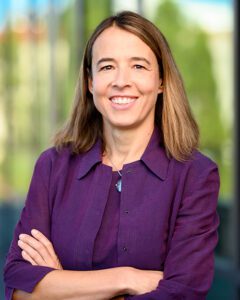
“We went from neoclassical economics that considered humans to be perfectly rational, to behavioral economics that brought in social psychology,” says Ulrike Malmendier, the Cora Jane Flood Professor of Finance, who will serve as the center’s faculty director. “Now we want to move the needle further, bringing together the best minds for rigorous research on human behavior from the sciences more broadly—including neuroscience, cognitive science, biology, medicine, epidemiology, and genetics.”
Funded with a philanthropic investment of almost $17 million by Bob O’Donnell, BS 65, MBA 66, and his wife, Sue O’Donnell, the center aims to become the preeminent hub for the maturing fields of behavioral economics and finance, bringing together leading researchers from a wide range of disciplines for collaboration, conferences, and bootcamps, as well as funding promising PhD students and postdoctoral scholars. The center will also host the prestigious Behavioral Economics Annual Meeting (BEAM), co-founded by Malmendier, every three years.
A nexus for cross-disciplinary research
O’Donnell says he was inspired by the pioneering work of Kahneman, Akerlof, Malmendier, and others who gave Berkeley its leading position in behavioral economics. “UC Berkeley is dedicated to integrating business education with other disciplines on campus, which is essential in this area,” he says. “It should have a center devoted to continuing this work.”
The center, says Berkeley Haas Dean Ann Harrison, will create a far-reaching impact across UC Berkeley, a research powerhouse with many areas of strength. “The goal is to cut through barriers that traditionally hinder research across disciplines, such as different ways of presenting data and publishing results, and bring people together in a different way than what’s usually done,” she says. “The O’Donnell Center will be the nexus of a new form of cross-disciplinary collaboration that pushes behavioral economics toward the future.”
Beyond ‘homo economicus’
Traditional economics was based on the assumption that human beings are perfectly rational, profit-maximizing “robots”—sometimes referred to as “homo economicus” or “economic man,” Malmendier says. Behavioral economics brought in insights from psychology and human behavior to explore the predictable foibles in our thinking, such as decision-making biases, fears of losing out, lack of self-control, and overconfidence. A classic example is Kahneman’s pioneering work with Amos Tversky on loss aversion, which showed that people are willing to take greater risks to avoid a loss than to secure a gain.
These ideas have been integrated into economics and finance departments around the world and have deeply influenced public policy and practice. For example, after Nobel Laureate Richard Thaler and Cass Sunstein developed the concept of the “nudge”—interventions that spur people to act in their own self-interest, such as enrolling in a retirement savings plan—hundreds of “nudge units” were established in governmental and private-sector organizations around the world.
Many other Berkeley Haas researchers helped pioneer this intellectual revolution, including finance professor Terrance Odean, BA 90, MS 92, PhD 97, the Rudd Family Foundation Chair, who was convinced by Kahneman to pursue a doctorate in finance rather than psychology and whose work reveals investors’ flawed decision making.
O’Donnell, the center’s founding donor, says he often applied insights from behavioral economics during his career as a portfolio manager for a large mutual fund group. “It represents a further step in the evolution of financial theory comparable to the development of the efficient market hypothesis,” he says. “When combined with existing financial theory, I believe that its insights enhanced results for my clients.”
Yet, during the 17 years he taught an investment class in the Berkeley Haas MBA program, O’Donnell says he sometimes encountered skepticism when he introduced ideas from the field. “Indeed, one student asked, ‘Isn’t all this kind of woo-woo?’”, he says. “Several years later, that student told me how perspectives from behavioral economics had helped her career in finance.”
Experience effects
Now, after more than three decades of foundational work, it’s time to move behavioral economics past its adolescence, Malmendier says. “Behavioral economics made progress by including psychology, but we didn’t include all the other sciences.”
Malmendier, whose groundbreaking work on “experience effects” earned her a Fischer Black Prize in 2013 for the top economist under the age of 40 and a Guggenheim Fellowship in 2017, has focused on complex economic behaviors. She has studied how stressful experiences with recessions, layoffs, inflation, housing bubbles, and political repression make consumer and investor behavior more cautious and risk averse for years afterward, and she has explored how stress can affect our health, careers, education, and other aspects of life in dramatic ways.
To further that work, Malmendier aims to bring a wider range of researchers together and break down silos. For example, collaborating with neuroscientists, neuropsychiatrists, biologists, medical researchers, and epidemiologists who have studied stress and trauma could more precisely demonstrate how past experiences shape our actions today and across generations. Stress impacts the big variables that economists study, such as completing an education, choosing an occupation, and deciding to have a family, she says.
“As we walk through life, our outlook on the world changes, especially if we suffer trauma,” she says. “Neuroscience says our brain gets rewired. There may be a long-term impact of stress on our longevity, on our aging, and on our health.”
Questioning the status quo
Malmendier, who now serves on the German Council of Economic Experts, is passionate about the potential of behavioral economics to help leaders create better solutions to the most complex and urgent problems of our time—from fighting climate change to battling inflation and avoiding financial crises. “If leaders keep in mind people’s emotions, their personal histories, and their psychologies, they can engineer ways to make things more predictable and give people more control over events help them live better lives,” she says. “That is our ultimate goal.”
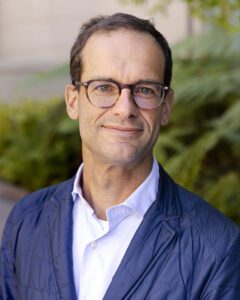
Moving the field forward will also involve rigorous research to reexamine what has come before. For instance, a recent paper by center co-founder Stefano DellaVigna, the Daniel E. Koshland Senior Distinguished Professor of Economics and professor of business, with Elizabeth Linos of Harvard, suggests that leaders should get more realistic about nudge policies—and better at incorporating them into practice. Two government nudge units opened their records to allow the researchers to look at all their interventions. By examining 126 randomized controlled trials of nudge policies involving 23 million people in the United States, the researchers found that nudge interventions are on average effective, increasing the desired outcomes by about 8%. However, the effects are less than those in published academic papers—about one-fifth the size. The authors attribute the difference to publication bias, or the tendency toward publishing only large, surprising results.
“Our study stresses the importance of research transparency,” DellaVigna says. “This transparent access is quite unique and shows a further innovative impact of behavioral economics, which has led to more evidence gathering within governments.”
In a second paper, DellaVigna and Linos, along with Department of Economics doctoral student Woojin Kim, found that even when nudge policies are found to be effective, public agencies implement them only about a quarter of the time, often due to organizational inertia.
In addition to Malmendier and DellaVigna, the center will include a host of affiliated researchers from Berkeley Haas and Berkeley Economics, as well as from across the university. They include Berkeley Haas professors Ricardo Perez-Truglia, Ned Augenblick, Don Moore, and Gautam Rao, PhD 14—who will join Haas in January from Harvard University—as well as Dmitry Taubinsky of Berkeley Economics and others. The founding gift will establish a permanent endowment to support the center and some of its ongoing activities.
###
Media Contact: Laura Counts, [email protected], 510.205.9570